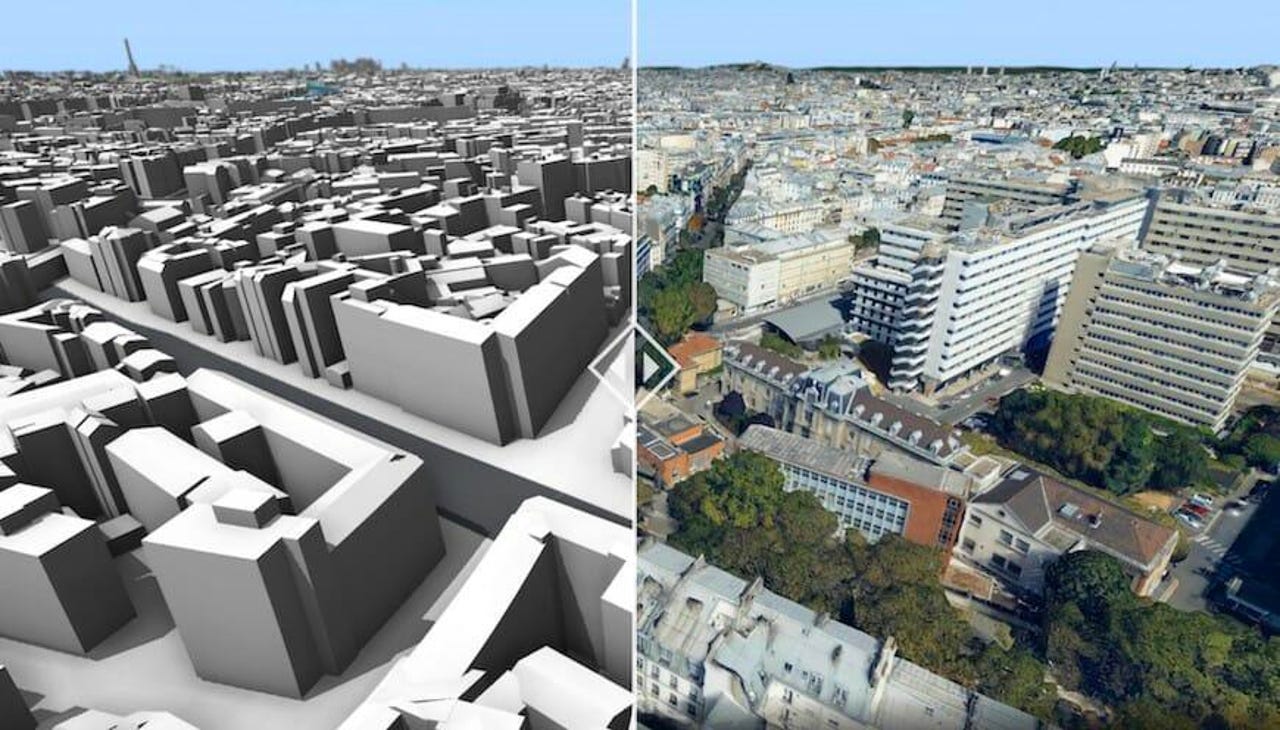Digital reality: Like Street View on performance enhancing drugs


Sensors are capturing every inch of our physical world. So whose job is it to stitch all that data together.
In the mixed reality arms race to create the world's digital twin, a kind of virtual infrastructure that will undergird a new generation of spatial computing, Google is very strong contender. But a new cloud-based visualization platfrom from Hexagon AB, which specializes in sensor, software, and autonomous solutions, is one of the first compelling sneak peaks at how novel and useful a granular digital version of the real world can be.
Hexagon's HxDR platform is basically a seamless fusion of reality capture data from airborne, ground, and mobile sensors, which are ubiquitous. All that data is crunched and coded into a dynamic 3D model that users can manipulate in a variety of ways.
City planners, for example, can knock down old structures and insert digital representations of urban parks or infrastructure projects. What was once the realm of a static rendering or an entirely animated visualization comes to eye-popping life in a virtual city that's visually identical to a real one, down to the art on a library's facade.
I've written before about the importance of the race underway to create the world's digital twin. It won't be long before whatever device I have on me at the time (a smartphone or wearable, for example) will be equipped to tell me all I need to know about a building just by training a camera at it.
HxDR, which is being rolled out as a practical enterprise tool for 3D modeling, is a step in that direction and in many ways a proof of concept. It's a very good example of what it looks like when a cloud-based platform stitches together airborne imagery and laser scans, indoor and outdoor terrestrial scan data, and mobile mapping data.
"HxDR enables customers to create their own Smart Digital Realities," says Hexagon President and CEO Ola Rollén. "We're uniquely positioned to deliver this innovative platform due to the vast library of data captured from our world-leading sensor and visualisation services portfolio – a portfolio we continually enhance through R&D and strategic acquisitions such as Technodigit, Luciad, MyVR, and the newly-acquired Melown Technologies."
The business model here stops short of being an end-all-and-be-all digital twin for mixed reality. Users can license real-world replicas from a growing Hexagon library, which currently takes up 3.6 petabytes. But Hexagon certainly recognizes it hasn't captured the entire earth from multiple angles. To make up the deficits, users can also drag and drop their own reality capture files into HxDR and the automated meshing function stitches it all up.
In addition to architectural and urban planning uses, media and entertainment professionals might use HxDR to remotely scout production locations.